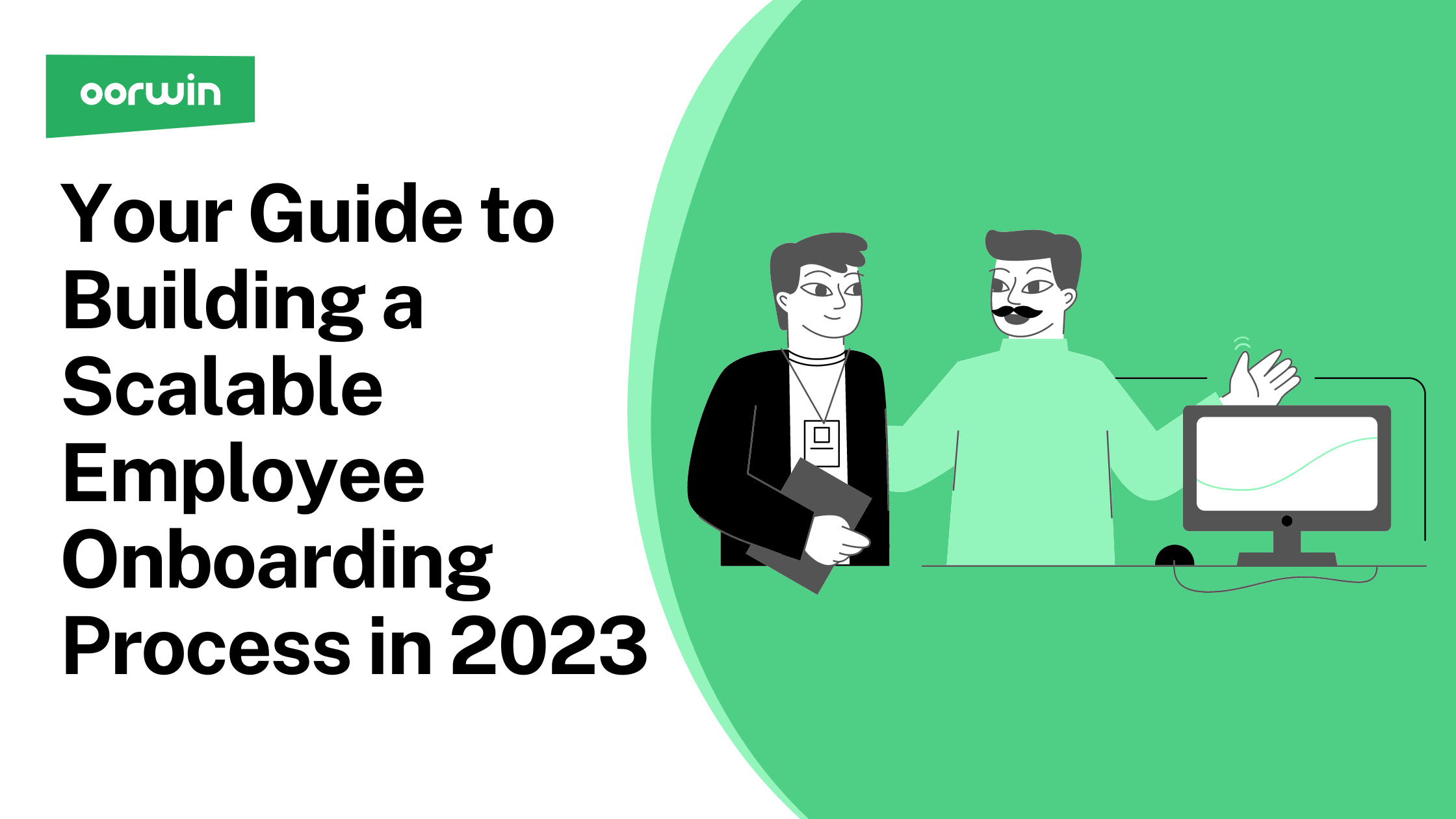Reinventing Employee Onboarding: Building a Scalable Process in 2023
Oorwin
4min read / 15 May 2023

Related Articles
What is an Employee Onboarding Process?
Employee onboarding refers to welcoming fresh talents into an organization while equipping them with the necessary tools and knowledge to succeed in their job responsibilities. The process starts from the moment a candidate accepts a job offer and continues through the first few weeks of employment. Onboarding is more than just orientation; it’s a comprehensive process that includes training, team building, and cultural immersion.
5 Benefits of Reinventing Employee Onboarding Process for Scalability
The benefits of an effective employee onboarding process extend beyond just introducing new hires to their roles. From improving early retention rates to strengthening company culture, a well-designed onboarding program can have a significant impact on an organization’s success. Here are five key benefits of an effective employee onboarding process.
Bolsters Early Retention
According to research, the first 90 days of employment are critical to employee retention. An effective onboarding process can reduce turnover by providing the necessary support to new hires during this crucial period.
Helps Through Dull Tasks
New employees often have to complete tedious tasks like filling out paperwork and attending orientation sessions. A good onboarding process can help alleviate boredom by making the process more engaging and interactive.
Fast Tracks Productivity
An effective onboarding process ensures that new hires quickly become productive team members. By providing the necessary tools and training, new hires can ramp up faster and contribute to the organization’s success.
Trust and Community
Onboarding is an opportunity to build trust and community within the organization. Welcoming new hires and making them feel part of the team makes them more likely to feel engaged and committed to the company’s success.
Strengthens Company Culture
A good onboarding process immerses new hires in the company’s culture and values. By understanding the company’s mission, vision, and values, new hires can better align their goals with the organization’s goals.
Key Steps in the Employee Onboarding Process Flow
Here are the steps to building an effective onboarding process:
New Employee Recruitment
The onboarding process starts with recruiting the right talent for the organization. Ensuring a successful recruitment process involves selecting new hires who align well with the company and its culture.
First Office Visit
The initial visit to the office presents a chance to create a favorable initial impact on the newly hired employee. The office visit should be well-planned and include the following:
- A tour of the facility.
- A meeting of key team members.
- An introduction to company policies.
Sending an Offer Letter
Once a candidate has accepted the job offer, it’s time to send the offer letter. The letter should include details on the start date, salary, benefits, and other pertinent information.
Early Onboarding For New Employees
Early onboarding includes pre-employment paperwork, background checks, and other administrative tasks. A good onboarding process should streamline these tasks and make them as painless as possible.
Welcoming New Hires on Day 1
The first day of work is crucial to setting the tone for the new hire’s tenure. A welcoming environment, introductions to colleagues, and a clear agenda for the day are essential.
Guiding New Employees Through Their First Weeks
The first few weeks are an opportunity to provide training, coaching, and support to new hires. The onboarding process should be well-planned and include clear goals and objectives for the new hire.
Ongoing Employee Engagement & Team Building
Employee engagement and team building should be continuous throughout the employee’s tenure. An effective onboarding process should include opportunities for employees to get to know one another, build trust and foster a sense of community within the organization.
The Role of Innovation in Reinventing Employee Onboarding
In the modern business landscape, innovation is not just a buzzword; it’s a necessity. This is particularly true when it comes to the employee onboarding process. Traditional methods of onboarding often involve tedious paperwork and time-consuming administrative tasks. However, the advent of automation and innovative HR tools like Oorwin is revolutionizing this process.
Automation has become an essential component for businesses looking to streamline their operations, and employee onboarding is one area that stands to benefit significantly from this trend. By automating routine administrative tasks such as sending offer letters and conducting background checks, HR professionals can free up their time to focus on what truly matters – building relationships with new hires and ensuring they feel welcomed and valued from day one.
Oorwin is an all-in-one HR software that simplifies recruitment, onboarding, and performance management. It offers interactive onboarding experiences, personalized training plans, and analytics features to track the effectiveness of the process. Utilizing automation can enhance the onboarding process, and Oorwin is a great tool to improve early retention rates and strengthen company culture. Visit the Oorwin website to learn more.
Frequently Asked Questions
What is Employee Onboarding?
Employee onboarding is the process of familiarizing new employees with the company, their roles, and the general work environment. It typically includes activities such as orientation sessions, training, and completing any necessary paperwork.
What is the Purpose of Onboarding?
The purpose of onboarding is to minimize onboarding time and ensure new employees are comfortable and knowledgeable about their roles. It helps to set expectations, improve communication, and ensure that new hires feel connected to the company, their colleagues, and the work that they will be doing.
What are the Benefits of Employee Onboarding?
Employee onboarding has many benefits. It can decrease turnover rates and improve employee engagement, leading to increased productivity. It also helps new hires feel welcome and a part of the team and ensures that decision-makers and team members can foster relationships with new employees.
Popular Articles..
Blog

2min read / 25-Jun-2025
Master Effective Interview Techniques with Oorwin: A Step-by-Step Recruiter’s Guide
Blog
Blog
Get the latest Oorwin releases, updates, success stories & industry news
 Back
Back
